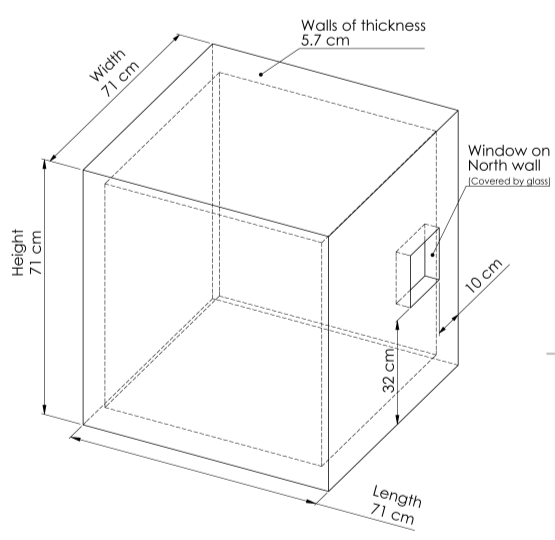This invention relates to a cooling method for building spaces using a heat exchanger that incorporates encapsulated phase change material (PCM). This heat exchanger reduces the thermal load and stabilizes the mean air temperature of the building space. The system involves a container filled with PCM and a tube for circulating a working fluid, which transfers heat to and from the PCM, enabling effective temperature regulation.
Traditional cooling systems for buildings often consume significant energy and may not efficiently manage temperature variations throughout the day. There is a need for a more efficient and cost-effective method to reduce thermal load and stabilize indoor temperatures.
The technology has an encapsulated PCM within a container, with a tube passing through the PCM, and an inlet & outlet for circulating a working fluid.
- The solution exhibits efficient thermal load reduction and temperature stabilization.
- It uses water's high heat capacity for better cooling compared to air-based systems.
- It is cost-effective and energy-efficient, with reduced need for continuous operation.
- It can be installed as a false ceiling for radiant cooling.
A cubical test chamber with dimensions of 710 mm per side and 57 mm wall thickness, featuring a small window, was used to test the system. The chamber included T-Type thermocouples for temperature measurement and a PCM layer of 18.4 mm thickness.
The technology has been developed and tested in a controlled environment using a cubical test chamber. Performance studies have shown promising results in reducing and stabilizing air temperatures.
4
This technology can significantly reduce energy consumption for cooling buildings, leading to lower utility costs and a smaller carbon footprint. It provides a sustainable solution for maintaining comfortable indoor temperatures.
- Heating, Ventilation, and Air Conditioning (HVAC) in residential and commercial buildings
- Industrial plants and warehouses for temperature regulation to protect sensitive equipment and stored goods from heat damage
- Any enclosed spaces requiring efficient cooling and temperature management
Geography of IP
Type of IP
201821001477
505895




